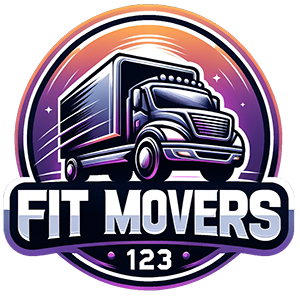How to Transport Heavy Gym Equipment: Trucks, Vans, and Trailers Explained
Moving heavy gym equipment is not only about properly disassembling and packing but also choosing the right mode of transport. Whether you’re relocating a single piece of equipment or an entire gym, understanding the capabilities and limitations of trucks, vans, and trailers is crucial. This guide will help you navigate your options to ensure safe and efficient transportation of your gym machinery.
Introduction
Transporting gym equipment requires thoughtful preparation and the right vehicle. The size, weight, and shape of your equipment will largely dictate the most appropriate transportation method. From cargo vans suitable for smaller loads to trucks and trailers for entire gym setups, let’s delve into what each option offers.
Vehicles for Moving Gym Equipment
- Cargo Vans: Ideal for smaller pieces of equipment like dumbbells, barbells, and disassembled parts. Vans offer ease of navigation through traffic and better protection against weather elements but have limited space.
- Box Trucks: With more capacity than vans, box trucks can accommodate larger equipment such as treadmills and ellipticals. They provide an enclosed space, protecting items from the elements. Consider trucks with lift gates for easier loading and unloading of heavy machinery.
- Trailers: For moving entire gyms or heavy-duty equipment, trailers hitched to powerful vehicles offer the most space. Open trailers are suitable for short distances in good weather, while enclosed trailers offer protection but require skillful driving and navigation.
Loading Techniques
- Proper Lifting: Always use safe lifting practices or equipment like forklifts or furniture dollies to move heavy items. This reduces the risk of injury and equipment damage.
- Securing Equipment: Use straps and ropes to secure equipment within the vehicle, preventing movement and potential damage during transit.
- Weight Distribution: Distribute the weight evenly in the vehicle to maintain balance and ensure a safe drive. Heavier items should be placed on the bottom and towards the center.
- Protection Measures: Use moving blankets and padding to protect equipment edges and surfaces from scratches or dents during transportation.
Conclusion
Choosing the right vehicle and employing best practices in loading are key steps in ensuring the safe transportation of your gym equipment. Each type of transport – cargo vans, box trucks, and trailers – offers specific benefits and limitations. Consider the size, quantity, and weight of your equipment when deciding on the best option. Remember, professional movers like Fit Movers 123 are experienced in transporting heavy gym equipment of all types, offering peace of mind and ensuring that your equipment arrives safely at its new destination.

